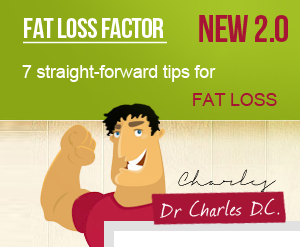The best quit smoking aids will help you to stop smoking by reducing your withdrawal symptoms when you stop. Some work by replacing the nicotine that you get when you smoke, others address the psychological side of cigarette dependency, and some are prescription meds that you can get from a doctor. We’ll look at many of these in this article to help you figure out what would be the best quit smoking aids for you.
Nicotine Replacement
When we smoke cigarettes or cigars, the substance that we become physically addicted to is the nicotine in them. Nicotine is a poison, but in small quantities it gives us a mild ‘rush’ like many other drugs. Our body becomes accustomed to it and quickly begins to depend on it. Quitting can give us symptoms like irritability and cravings which can be reduced or even avoided completely by the use of nicotine replacement therapies.
The best quit smoking aids using nicotine replacement include nicotine patches, nasal spray, inhalers or tubes, gum and nasal spray. These all work but they may suit different people. Patches release nicotine in a slow, steady dose. The others give you a burst of nicotine when you most need it, more like having a cigarette. Gum and lozenges may be a good choice for somebody who is concerned about a tendency to overeat.
Prescription Meds
In consultation with your doctor you might decide to take medication to reduce the withdrawal symptoms and help you quit. There a now a couple of meds available that have been shown to be among the best quit smoking aids.
Buproprion hydrochloride is an anti-depressant that has been approved for use for people who are quitting smoking. It helps with the irritability and depression that are often associated with quitting. Buproprion hydrochloride is marketed under the names Zyban and Wellbutrin in the USA.
Varenicline tartrate is marketed as Chantix. It has been shown to mimic the effects of nicotine in the brain, reducing cravings. It also stops a person from getting a nicotine rush if they smoke while they are taking it, by blocking the nicotine receptors in the brain, so you are less likely to continue smoking.
Other Stop Smoking Aids
If you prefer to choose natural remedies, then acupuncture or hypnosis may be the best quit smoking aids for you. It is not known exactly how acupuncture works, but many people have found that it does. Hypnosis can help strengthen your determination to quit – which is probably the most important factor when you are trying to stop smoking.
You may also want to investigate herbal tobacco replacements including herbal cigarettes. These should not be used long term because any kind of smoke is thought to be bad for the lungs, but they can help you through those times in the early days of quitting when you feel that you must inhale something.

Imagine if you could easily use the same method that allowed Paul Peyton, a heavy smoker for more than 14 years, ? to permanently quit overnight… Wouldn’t that be wonderful?Well, guess what – you can. In fact, ANYONE can do it.
But first, you need to understand where you’ve gone wrong in the past… Treating just the physical addiction to smoking. But it can only be removed completely by using targeted psychotherapeutic techniques. NOT by ignoring it and hoping it will go away. And CERTAINLY NOT by throwing even more nicotine at it, in the form of patches or gum. You MUST deal with BOTH parts of your addiction the right way, or you will keep getting those cravings forever…
Specific, step by step instructions ? we show you exactly what to do, so nothing is left to chance. You choose the timeframe ? implement the method at your own pace, as you feel comfortable. Tried and tested method ? this cutting-edge method has been successfully used to cure thousands of happy ex-smokers. Permanently removes your mental dependence at the subconscious level ? resulting in a permanent end to mental cravings.
Check out PermaQuit now.
There are many kinds of help that you can get when you have made the decision to stop smoking but the most important question is whether you are really determined to quit. It has to matter to you. So the first thing to do right now is to sit down and write a list of all the reasons that you want to quit. Think of at least 10-15, more if you can. The best quit smoking aids in the world cannot help somebody who is only quitting because somebody else wants them to.
Related Blogs
- Related Blogs on Fitness


 Earlier research showed that nicotine is an appetite suppressant and may increase the metabolic rate.
Earlier research showed that nicotine is an appetite suppressant and may increase the metabolic rate.
 20 minutes after finishing your last cigarette, your pulse,
20 minutes after finishing your last cigarette, your pulse, 
